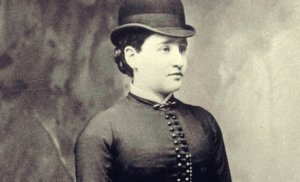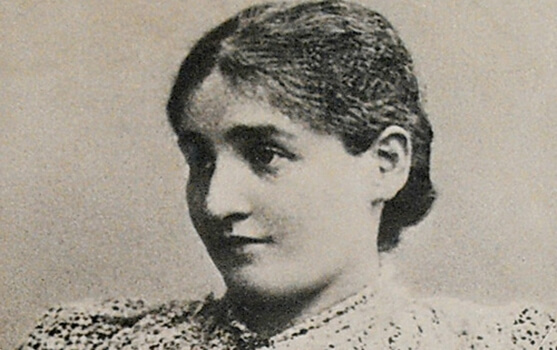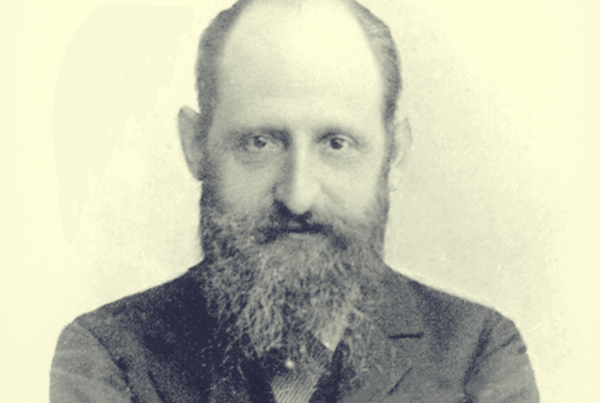Anna O. and the Beginning of Psychoanalysis

Sigmund Freud was an astute doctor fascinated by the enigmas of the human mind. The founder of psychoanalysis completely changed everything we thought we knew about reason and madness.
One of the most significant cases he studied was a patient known as Anna O.
Freud was especially interested in medical cases that had no explanation at the time. There were a few such patients in the famous Pitié-Salpêtrière Hospital in Paris, including people with physical disabilities such as blindness and paralysis but with no apparent physical cause.
“The cathartic treatment of hysteria, the precursor to psychoanalysis, was the joint discovery of a wonderful patient and an open-minded doctor.”
-Sándor Ferenczi-
Many doctors treated these cases with hypnosis, including Freud, who learned how to use hypnosis in his own practice. However, he noticed that his patients would get better but their symptoms would reappear later on. Or they would develop different symptoms in their place.
He and Josef Breuer, his teacher, seemed to have reached an impasse until they came across the case of Anna O.
Anna O., Breuer, and Freud
Josef Breuer was an expert on hysteria. He was also the most well-known figure in clinical hypnosis at the time. Freud learned from him and deeply admired him.
Together, they wrote the first lines of what would be the history of psychoanalysis. And Anna O. was a decisive case for the advancement of their understanding of the human mind.

Back then, hysteria was viewed as a female illness. People believed that women sometimes feigned physical problems in order to get attention. Breuer, however, was convinced they weren’t lying, and Freud thought the same.
Anna O. was a 21-year-old Austrian woman from a wealthy family. She was particularly intelligent and well-educated.
However, she began to present very bizarre symptoms. She would go into a sort of trance, which she would call a “cloud.” She would hallucinate things like snakes and skulls.
Then things got even worse: she would become mute and paralyzed, couldn’t drink liquids, and sometimes forgot her native language, German, and could only speak English or French.
Breuer started to treat her when she developed a persistent, exhausting cough. She also had paralysis in her face, arm, and leg. Her father suffered from a tuberculous abscess and she was the one who took care of him during his illness. But now she was getting sick.
Anna O. and the healing power of words
Breuer performed hypnosis on her, but she produced only chaotic stories. The second time he hypnotized her, he asked her whether something was bothering her.
She responded with the following sentence: “ajamáis acht nobody bella mió please lieboehn nuit.” It was crazy, a sentence consisting of five different languages. Breuer decided to treat Anna O. without hypnosis from that point on.
He then changed her treatment and used listening as his main tool. He encouraged her to talk and just say anything that came to mind. Her symptoms began to improve, and this laid the foundation for what became known as free association.
She began to call this process “chimney sweeping,” or the “talking cure.” Psychoanalysis would incorporate the latter into its own descriptions later on. Breuer, for his part, called the process the “cathartic method.”

Curing Anna O. and beginning psychoanalysis
The therapeutic process with Anna O. had many highs and lows. She ended up falling in love with Breuer and developed a strong dependence on him. He also felt attracted to her, but as he was married, he decided to end treatment.
A while later, Freud discovered the phenomenon of “transference” in these events and the sexual desire behind hysteria.
Anna O. was hospitalized twice and had a few relapses. However, there came a point when she had all of her symptoms under control. She became an activist for women’s and children’s rights and a relatively significant writer and translator. Her life started to follow what you might call a “normal” path.
Eleven years later, Breuer and Freud published a book called Studies on Hysteria, which included psychoanalysis as a differentiated approach.
The case of Anna O. is the most illustrative one in the text. Many would come to say that symbolically, hysteria and Anna O. were the true founders of psychoanalysis.

Sigmund Freud was an astute doctor fascinated by the enigmas of the human mind. The founder of psychoanalysis completely changed everything we thought we knew about reason and madness.
One of the most significant cases he studied was a patient known as Anna O.
Freud was especially interested in medical cases that had no explanation at the time. There were a few such patients in the famous Pitié-Salpêtrière Hospital in Paris, including people with physical disabilities such as blindness and paralysis but with no apparent physical cause.
“The cathartic treatment of hysteria, the precursor to psychoanalysis, was the joint discovery of a wonderful patient and an open-minded doctor.”
-Sándor Ferenczi-
Many doctors treated these cases with hypnosis, including Freud, who learned how to use hypnosis in his own practice. However, he noticed that his patients would get better but their symptoms would reappear later on. Or they would develop different symptoms in their place.
He and Josef Breuer, his teacher, seemed to have reached an impasse until they came across the case of Anna O.
Anna O., Breuer, and Freud
Josef Breuer was an expert on hysteria. He was also the most well-known figure in clinical hypnosis at the time. Freud learned from him and deeply admired him.
Together, they wrote the first lines of what would be the history of psychoanalysis. And Anna O. was a decisive case for the advancement of their understanding of the human mind.

Back then, hysteria was viewed as a female illness. People believed that women sometimes feigned physical problems in order to get attention. Breuer, however, was convinced they weren’t lying, and Freud thought the same.
Anna O. was a 21-year-old Austrian woman from a wealthy family. She was particularly intelligent and well-educated.
However, she began to present very bizarre symptoms. She would go into a sort of trance, which she would call a “cloud.” She would hallucinate things like snakes and skulls.
Then things got even worse: she would become mute and paralyzed, couldn’t drink liquids, and sometimes forgot her native language, German, and could only speak English or French.
Breuer started to treat her when she developed a persistent, exhausting cough. She also had paralysis in her face, arm, and leg. Her father suffered from a tuberculous abscess and she was the one who took care of him during his illness. But now she was getting sick.
Anna O. and the healing power of words
Breuer performed hypnosis on her, but she produced only chaotic stories. The second time he hypnotized her, he asked her whether something was bothering her.
She responded with the following sentence: “ajamáis acht nobody bella mió please lieboehn nuit.” It was crazy, a sentence consisting of five different languages. Breuer decided to treat Anna O. without hypnosis from that point on.
He then changed her treatment and used listening as his main tool. He encouraged her to talk and just say anything that came to mind. Her symptoms began to improve, and this laid the foundation for what became known as free association.
She began to call this process “chimney sweeping,” or the “talking cure.” Psychoanalysis would incorporate the latter into its own descriptions later on. Breuer, for his part, called the process the “cathartic method.”

Curing Anna O. and beginning psychoanalysis
The therapeutic process with Anna O. had many highs and lows. She ended up falling in love with Breuer and developed a strong dependence on him. He also felt attracted to her, but as he was married, he decided to end treatment.
A while later, Freud discovered the phenomenon of “transference” in these events and the sexual desire behind hysteria.
Anna O. was hospitalized twice and had a few relapses. However, there came a point when she had all of her symptoms under control. She became an activist for women’s and children’s rights and a relatively significant writer and translator. Her life started to follow what you might call a “normal” path.
Eleven years later, Breuer and Freud published a book called Studies on Hysteria, which included psychoanalysis as a differentiated approach.
The case of Anna O. is the most illustrative one in the text. Many would come to say that symbolically, hysteria and Anna O. were the true founders of psychoanalysis.

This text is provided for informational purposes only and does not replace consultation with a professional. If in doubt, consult your specialist.







